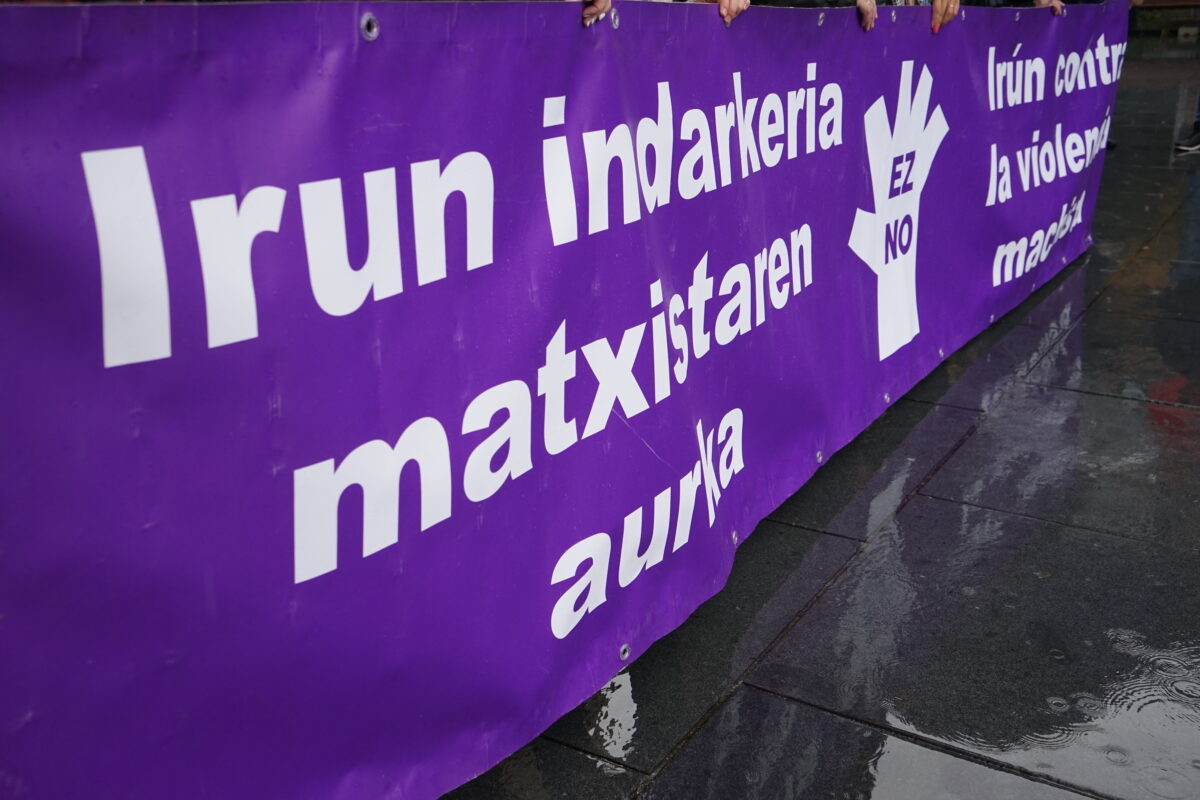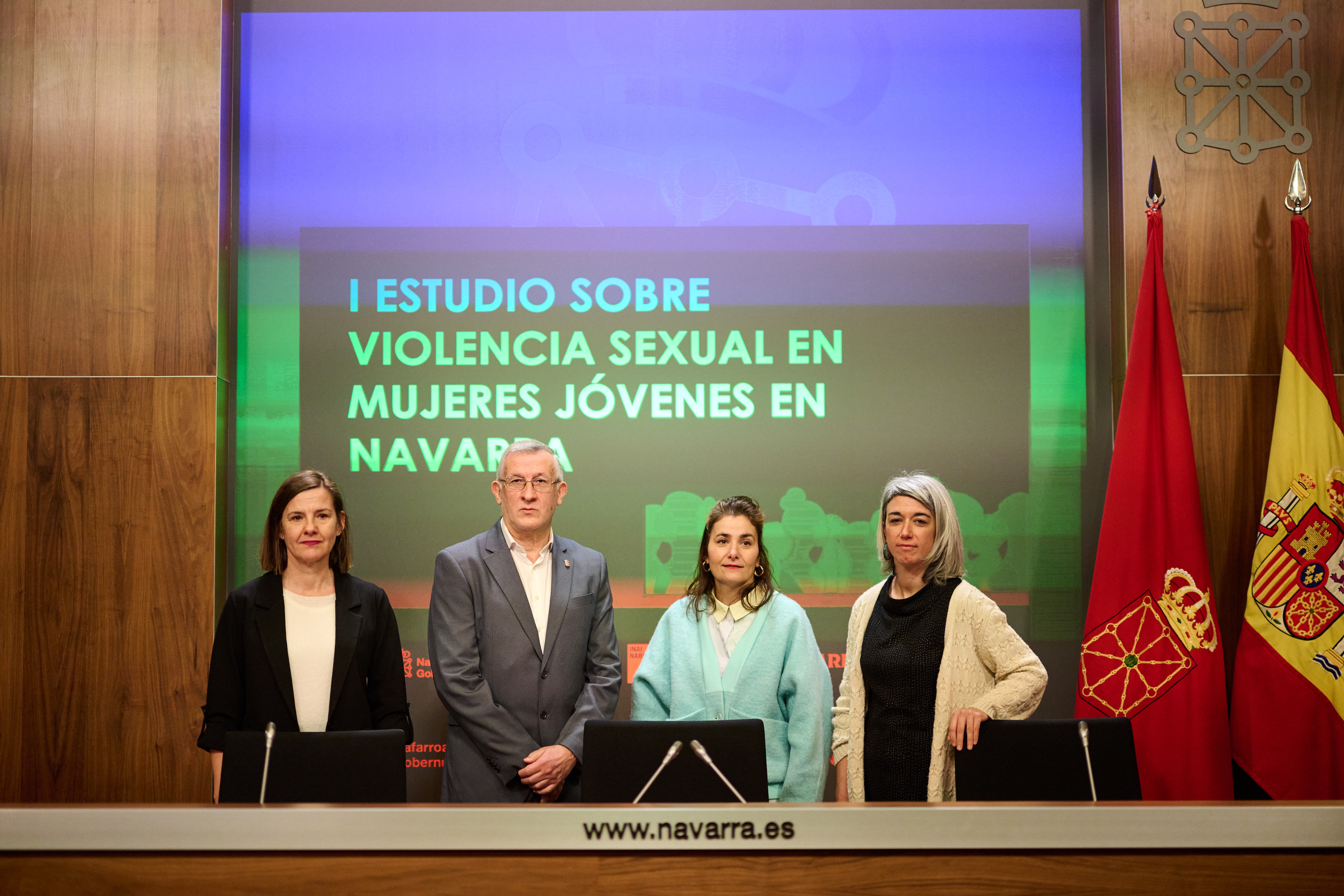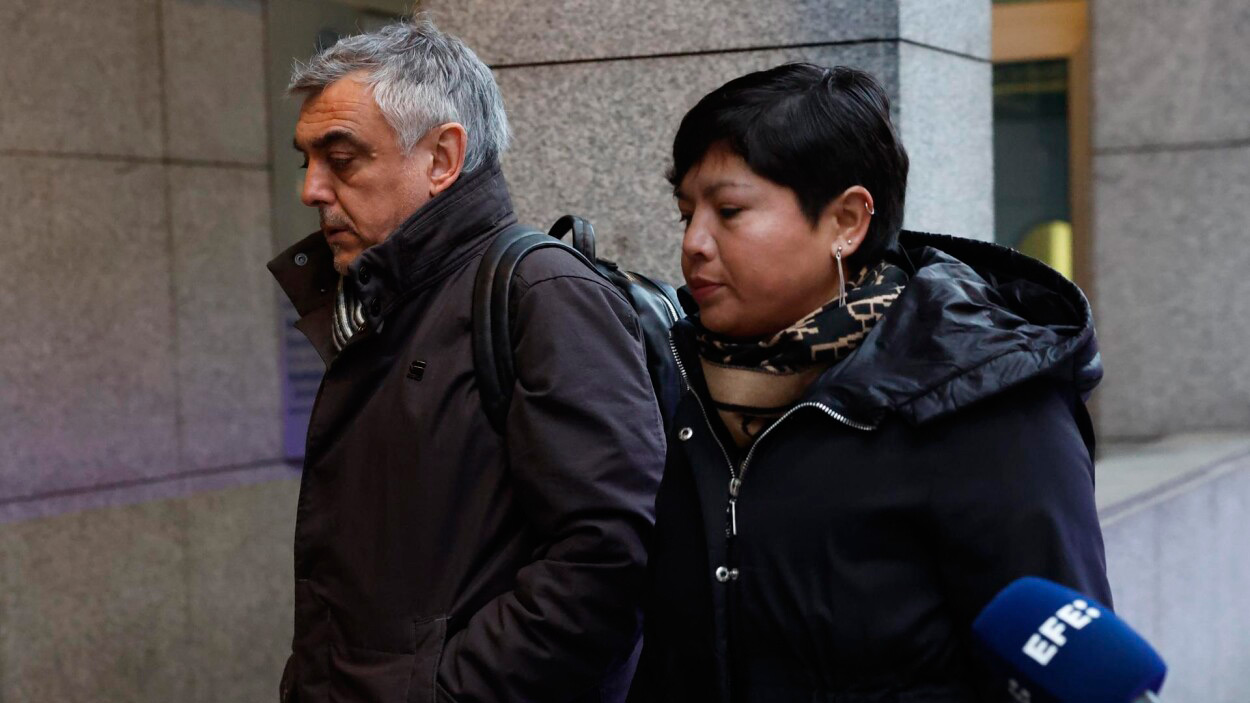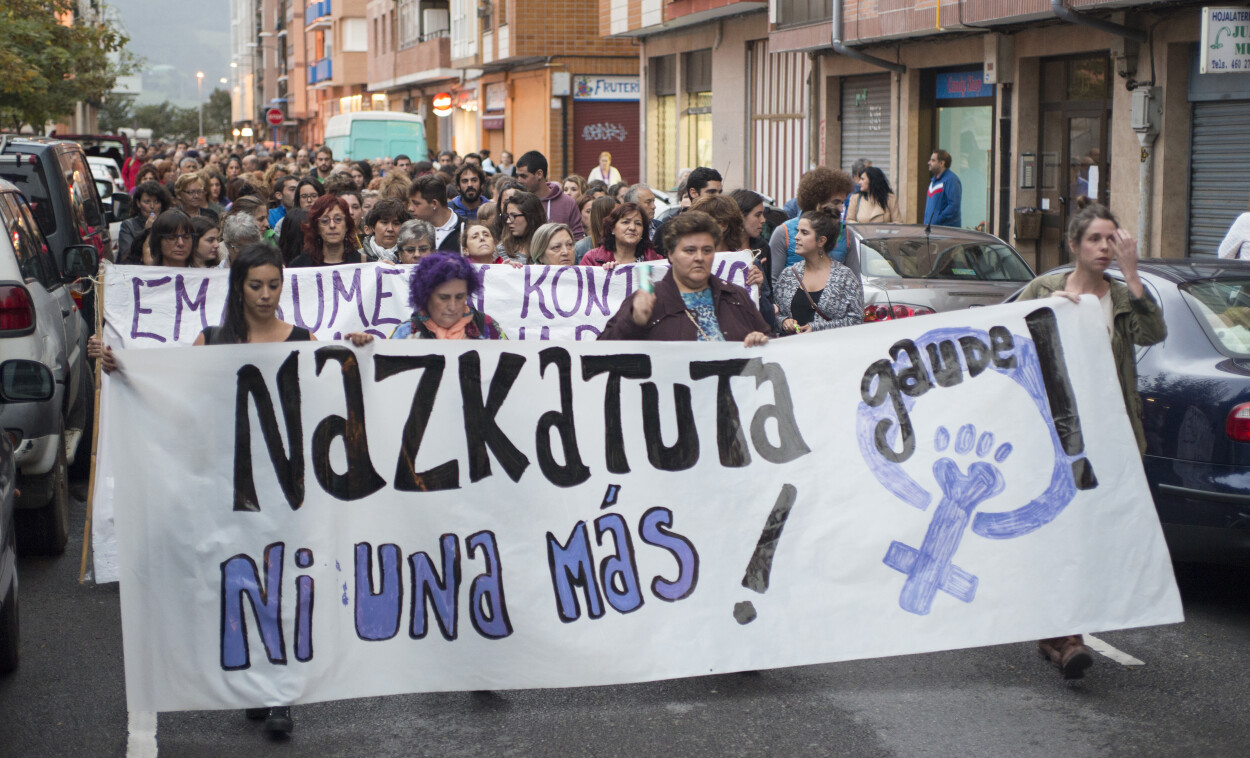Violence against women has a clear political intention
- Women have worked in various studies on the role of women in political and armed conflicts, especially in exile, always using a gender perspective. It has investigated the role of women not only in the conflict, but also in the peace process that follows it. Working to recover the historical memory of women always Irantzu Mendia Azkue.

EHUko Soziologia eta Gizarte Langintza Saileko irakasle da, eta Nazioarteko Lankidetza eta Garapenari buruzko Ikasketa Institutuko-Hegoako kide. Hainbat ditu intereseko ikergaiak: gatazka armatuen azterketa feminista, bakea eraikitzea, justizia trantsizionala eta memoria historikoa, besteak beste. Ikuspegi konparatua baliatzen du bere lanean eta El Salvador, Guatemala, Kolonbia eta Mendebaldeko Saharan feminismoak giza eskubideen defentsan eta inpunitatearen kontra gauzatu duen borroka ikertu du. Euskal Herriko Foro Sozial Iraunkorreko Genero Taldeko kide ere bada, eta, bertatik, gure herriko baketze prozesuan emakumeen esku hartzeari ekarpen egiten ari da.
What can the conflicts you have analyzed abroad bring in our situation? Either from the point of view of the situation of women or from the political point of view in general.
Each conflict must be analyzed in its context. Each one has its own history, subjects and dynamics. The context will always limit certain particularities of each conflict. Anyway, I'm interested in starting tests with a comparative look. Only through it can we discover the similarities and differences that can appear and learn from different experiences. I do not believe, therefore, that every conflict is “unique and unparalleled”. As for the vital experiences of women, it is common to see that violence acquires specificities anywhere through gender. Especially when it comes to sexual violence. In all violent conflicts, we have women who are committed to the acquisition of arms and also to pacification from the outset. I would like to highlight as an important contribution the ongoing struggle that has taken place in the feminist movement in many countries. He advocates being present in conflict resolution spaces and has worked on the impacts of violence; on the agenda of truth, justice and reparation, for example.
Has that been the case with Euskal Herria?
In the case of Euskal Herria, I have not seen that the feminist movement has acquired as much prominence as a subject in issues related to the political and armed conflict. Neither autonomously, nor building alliances with other social movements. Historically, as far as conflict management is concerned, most of the weight or what to say has been the parties and institutions, and not so much the social partners.
In this same Argia (24 October 2004, nº 1.963), you said that female claims are considered anti-patrias. Are you still in it?
I guess so. This trend still exists in post-conflict and post-conflict contexts. Understanding women’s autonomous struggle – beyond certain partisan positions – as a source of division or rupture. In extreme cases, it has also been considered a "betrayal" against the homeland. Above all, when the demands of women denounce the violence of subjects that can be placed on the side of each and, above all, in the denunciation of violence against women. In cases that are not extreme, the demands of women are often taken with mistrust or misunderstanding.
For example?
I find the case of Kurdistan interesting. And that is that there, in recent years, the struggle for the freedom of the Kurdish people is spreading more and more, and feminist demands are a single struggle. In Colombia, on the other hand, the incorporation of the gender perspective into the 2016 Peace Accords and the adoption of measures for the rights of women and members of the LGTBI movement were threatened by conservative right-wing sectors. They, for example, shook the gender issue so that he did not win the referendum on the Peace Agreement.
Does the conflict, in general, strike men and women in the same way?
Feminist research has shown that conflicts and, in particular, violence, nowhere are equal to men and women. We know that in the patriarchal organization of society, the roles, identities, beliefs and values that correspond to men and women are very defined. That is what leads to unpleasant living conditions and social positions. Conflict, including war, as a social phenomenon, is traversed by that same patriarchal organization. War, moreover, has to take the most traditional gender roles to the extreme to make war possible.
“War has to take the most traditional gender roles to the extreme to make war possible.”
“To make war possible.” What do you mean?
For example, it has to spread a masculinity among society that is very willing to exert violence. In addition, women also have to recover the old image that is the property they have to defend. It must also legitimize hierarchical and authoritarian relationships for military leaders to consolidate their power. Etc. In this context, there is a steady decline in women’s rights and a process of intensification of violence against women. On the other hand, it is known that in political and armed conflicts, gender-based violence disproportionately impacts on women the violation of human rights. For example, sexual violence, forced migration and the loss of economic, social and cultural rights.
A seminar on feminist justice was held in Bilbao on 1 June. What does “feminist justice” mean?
Feminism lives with great distress the current model of justice. The justice system that was rooted and strengthened by the creation of the modern state in Western countries has never been focused on guaranteeing the rights of women. We know that in the historical construction of citizenship rights, women were marginalized, and that the justice system we know is the heir to this exclusion. Throughout history, women have tried to make changes to this system, which is totally constrained by patriarchal attitudes and mentality, and in particular, since the feminist struggle has been fought to achieve legislative and judicial changes. Despite the progress made, most of the things remain. The testimony of women is not credible, crimes against women are not considered or properly investigated, the victim also suffers from institutional violence ...
.jpg)
Hence the Bilbao seminar, the reflection on the model of justice…
Feminism has begun a serious international debate and, along with that, an issue has been put on the table in which a model of “feminist justice” that is still in the process of definition can be built. There are different lines of thought in this regard and, consequently, different strategies and ways of doing justice. For example, while the analysis of the patriarchal tendencies of the justice system is sufficiently shared, some consider that the internal breakdown or transformation of the system is the most important, that the gravity of crimes against women be placed in the place they should occupy in discourse and in legal practice, as in the case of sexual violence, that progress continues through strategic litigation ... Others think that we should create other notions and practices of justice, where the institution would not have such a prominent role, and yes, on the contrary, the community. In this way, better attention would be given to the victim of violence – close care, based on care… – and a culture of collective responsibility based on justice and reparation would be extended. In this respect, there are also abolitionist positions that call into question the penalty, the prison and the criminal system itself.
They torture women, rape them in wars, abuse… Does that woman have any visibility?
These grave violations of human rights have been gaining visibility in recent decades, and this has been made possible by the feminist movement, both from the point of view of theoretical analysis and political practice, which has made great efforts. To this end, the fact that violence against women has become the focus of the feminist struggle throughout history and anywhere has been strategic. Denouncing this violence and placing it as the main tool of patriarchy has contributed a great deal to the process of “denaturalization” of it: violence is not normal, it is not natural and has a clear political intention.
It has analysed the role of women in conflicts. What about the scares of Irun and Hondarribia?
In all the cases analyzed, there have been women fighters who have decided to take the weapons, although in varying amounts. It is possible that in any violent conflict in Euskal Herria there are also women who have taken arms. If the significance of the scares is to commemorate a historical fact related to war, the presence of women as wrestlers can be totally in keeping with the reality to be remembered. But that still idealizes the behaviors of women and men in our society and breaks down the most entrenched stereotypes, giving rise to macho and conservative reactions.
And so, will we continue like this forever?
I am Gasteiztarra, and there, some have enthusiastically welcomed once a year the recreation of the Battle of Vitoria of 1813 in the campas of Armentia. The images show the same thing as always: many men dressed in soldiers, rifles in hand, on foot or on horseback… What do the few women who appear? Heal the men who are injured in this fictional struggle. In the eyes of many it is the only warlike imaginary!
It also works on the identification of links between capitalism and patriarchy. How do you do that?
Capitalism and patriarchy are two systems of exploitation that feed each other. Both impose the same thing: a model of social organization in which people and peoples are placed in the positions necessary for the accumulation of the capital of a minority. Capitalism, in all its historical phases, has had to use violence to survive, because it logically develops resistance to all systems of exploitation. For its part, patriarchy has done an enormous amount of work in terms of legitimizing the use of violence. Maximising competitiveness, for example: It has established the idea of “the law of the strongest”, it has hierarchized the relations between individuals and collectives and normalized the unfair ones, it has reconciled the economic and military objectives.
Do you mean unjust relations between men and women?
Yes, but not just. Both capitalism and patriarchy have very negative impacts on both men and women, but these impacts are uneven, because society gives more value to man's life and to a certain masculinity. That is why, among the poor and the precarious, women are the poorest and most precarious, and, at the same time, violence against women remains a constant in all narrow societies or in all classes. To this must be added a historical system of exploitation, colonialism. In fact, colonialism, like patriarchy, is a violent system that has been built to favor capital accumulation: It only causes oppression beyond the borders of the Western countries.
“Apurka-apurka hurbildu nintzen genero ikuspegira eta horren erabilera politikoaren eragile izan den mugimendu feministara. Neure testuinguruarekin bat eginez eta kontzientzia handiagoa hartuz joan nintzen heinean gertatu zen hurbiltze hori. Leiho bat ireki zitzaidan, feminismoak zabaltzen duen leihoa da. Laster konturatu nintzen hortik datorren haize freskotik arnastu nahi nuela”.
“Nik, egia esan, ez diot interes handirik ikusten horrelakoak oroitzeari [alardeak, Gasteizko borroka…]. Horiek militarizazioaren eta militarismoaren balioak normalizatzea besterik ez dute indartzen. Seguru nago bestelako gertaera historiko askori eman ahal diegula garrantzia, borroka feministarako edo herrien askapenerako garrantzitsuak izan diren gertaerak”.
“Gatazken teorian erabiltzen den kontzeptu bat ‘ezin landuzko gatazkak’ da. Batzuetan, gatazkak iraunkor bihurtzen dira, ‘gatazka ahaztuak’ direlako. Agenda politikoan edo komunikabideetan agertzeari uzten diote –hala tokian nola nazioartean–, gatazka horiek konpontzeko pausoak ematen ez direlako. Irun eta Hondarribiko alardeak ez dira ‘gatazka ahaztuak’, baina konpontzeko bitarteko politiko guztiak ez dira jartzen, ‘enkistatzen’ utzi dira eta, horrela, iraunkor bihurtu dituzte”.
“Indarkeriak ez ditu emakume guztiak era berean jotzen. Gizartearen hierarkizazioak eragiten dituzten faktoreek ere –dela arrazakeria, klasismoa, kolonialismoa eta abar–, ezberdintasunak sortzen dituzte emakumeen artean”.
Bi erizainetatik batek lanean eraso sexistak jasaten dituela azalerazi du Erizainen Ordenak joan den urte bukaeran egin ikerketak. 21.000 erizainek ihardetsi dute, sektore pribatu, publiko eta liberaletik. Hauetan 2.500 gizonak dira.
Today, the voices of women and children remain within a culture that delegitimizes their voices, silencing their experiences, within a system aimed at minimizing or ignoring their basic rights and needs. A media example of this problem is the case of Juana Rivas, but her story... [+]


















.jpg)



